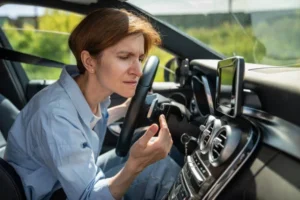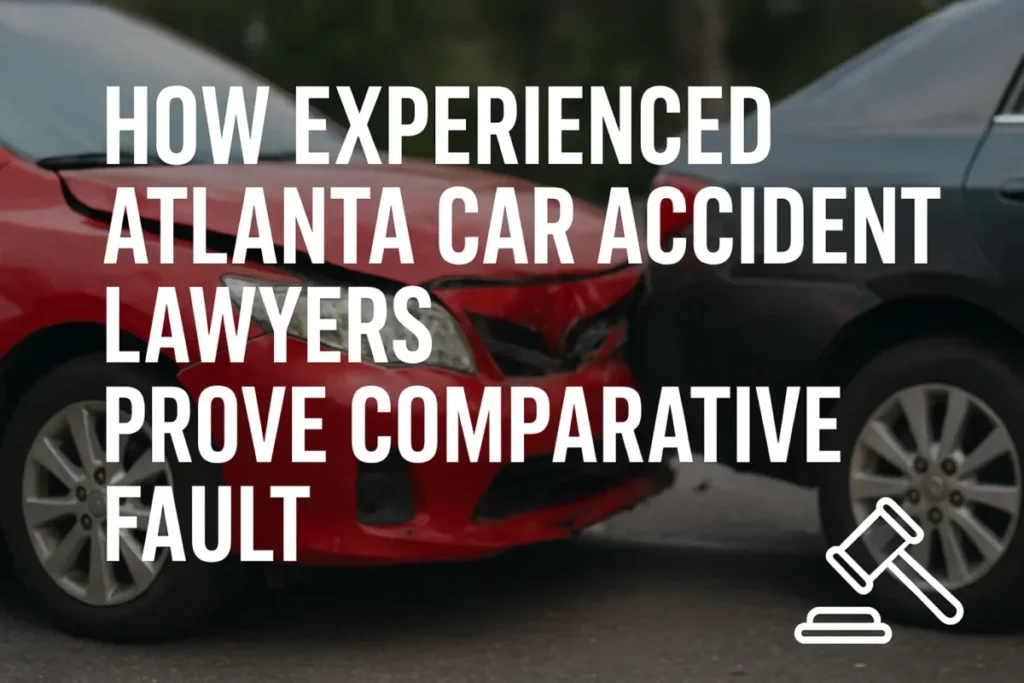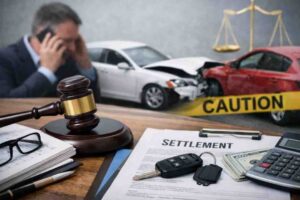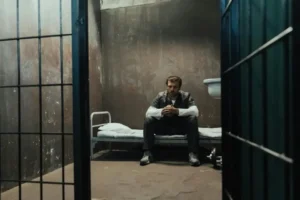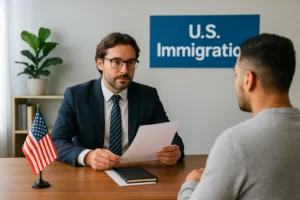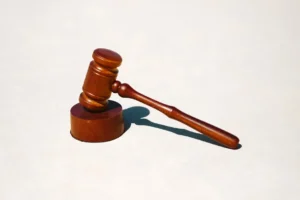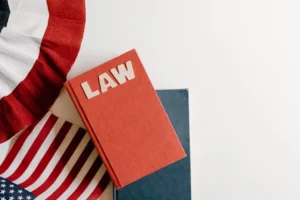Disclaimer: This article is for informational purposes only and does not constitute legal advice. Laws and legal outcomes vary by case and jurisdiction. For guidance on your specific situation, please consult a qualified Atlanta car accident attorney.
Accidents rarely unfold in a single, simple story. Intersections are filled with fast decisions, competing accounts, and partial evidence. Georgia’s comparative negligence rules require a careful breakdown of each driver’s conduct, which means lawyers must track every contributing factor with precision. When counsel builds a case around facts, science, and law, negotiations move from guesswork to measurable fault allocation.
Seasoned investigators and experienced Atlanta car accident lawyers start with a clear objective. They identify every behavior that influenced the collision, document each data point, and connect those facts to Georgia’s modified comparative negligence standard. That approach strengthens leverage during settlement talks and positions a claim for trial if the insurer resists a fair result.
Forensic scene reconstruction that pinpoints responsibility
Attorneys secure the crash scene promptly. They map skid marks, yaw patterns, gouges, and final rest positions. They measure visibility, grade, and lane widths. They verify traffic control timing and signage. With those inputs, a reconstruction expert models speed, reaction time, and braking efficiency. This work shows who created a hazard, who failed to respond, and how much each choice contributed to the impact. Clear diagrams and time-distance calculations give adjusters and jurors an understandable picture of shared fault.
Digital evidence from EDR, GPS, and smartphones
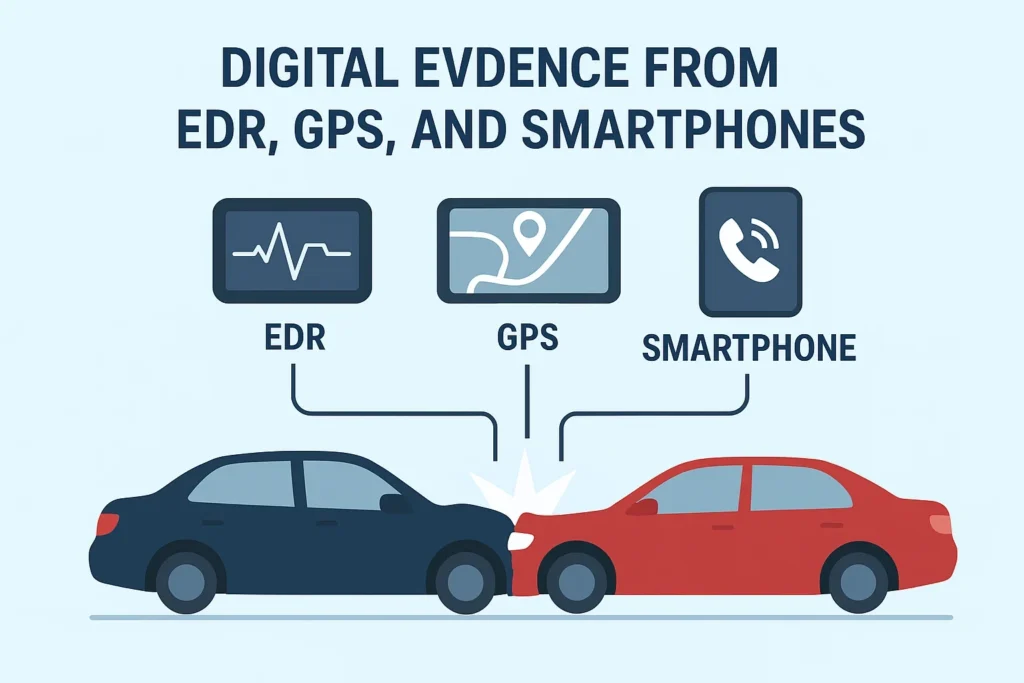
Modern vehicles record critical telemetry. Event Data Recorders log throttle position, speed, brake application, seat belt status, and airbag deployment milliseconds before impact. Counsel preserves modules, downloads datasets, and compares numbers to witness statements. GPS history from fleet systems and infotainment logs can reveal route choice and speed trends. Phone metadata may show active calls or app use near the moment of collision. When lawyers align these sources, speculation fades and apportionment of fault rests on verifiable technology.
Video audits from traffic cameras and nearby businesses
Many intersections capture movement through municipal cameras. Neighborhoods often rely on doorbell devices and retail security systems. Attorneys canvass the area, request footage before it is overwritten, and synchronize clips to a single timeline. Frame-by-frame analysis confirms lane position, turn radius, headlight use, and following distance. Video also reveals subtle behaviors that witnesses miss, such as creeping into a crosswalk or rolling through a stop line. Visual proof anchors a comparative negligence argument in objective imagery.
Witness credibility and human factors evaluation.
People perceive crashes through stress and limited vantage points. Lawyers interview each witness quickly, record details, and check for consistency with physical evidence. Human factors experts assess sightlines, sun angle, glare, auditory cues, and expectancy violations. They explain how a driver could or should have detected a hazard with regular attention and reasonable scanning. This discipline helps allocate percentage fault based on what a prudent person would have noticed and how quickly a careful driver would have reacted.
Medical causation, biomechanics, and injury consistency
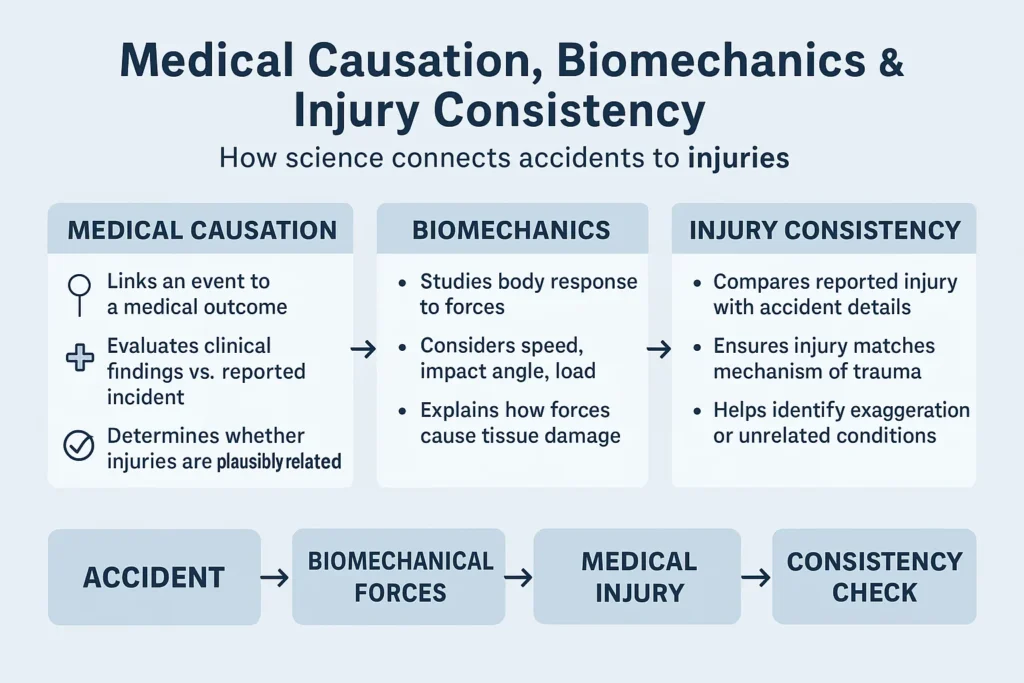
Fault arguments gain strength when injury patterns match the mechanics of the crash. Biomechanical consultants evaluate occupant position, delta-V, restraint use, and intrusion. They relate forces to torn ligaments, fractures, or traumatic brain injury. Treating physicians and radiologists establish timelines that link symptoms to collision dynamics. When the medical story aligns with reconstruction data, the case shows not only who erred but also how that error produced specific harm. That connection supports damages while reinforcing the comparative fault percentages.
Georgia’s modified comparative negligence calculation
Georgia uses a modified comparative negligence rule with a 50 percent bar. If a claimant carries 50 percent or more of the blame, the court denies recovery. If the claimant holds less than 50 percent, the court reduces damages by that percentage. Attorneys run precise scenarios that test different allocations. For example, a jury award of $200,000 with 20 percent fault assigned to the plaintiff yields a $160,000 recovery. Lawyers present charts that tie each factual point to a percentage, which helps negotiators settle on a rational split.
Countering insurer tactics that inflate claimant fault
Carriers often overemphasize minor mistakes to shrink payouts. They may cite momentary speeding, imperfect evasive maneuvers, or ambiguous lane position. Counsel answers with context. Time-distance math may indicate that slight speeding did not alter the inevitability of a collision. The video may reveal that a sudden cut-off left no safe escape. A lane marker may sit under standing water, making position judgments unreliable. When attorneys supply specific facts and expert explanations, inflated fault claims lose force.
Documentation that strengthens negotiations and trial posture
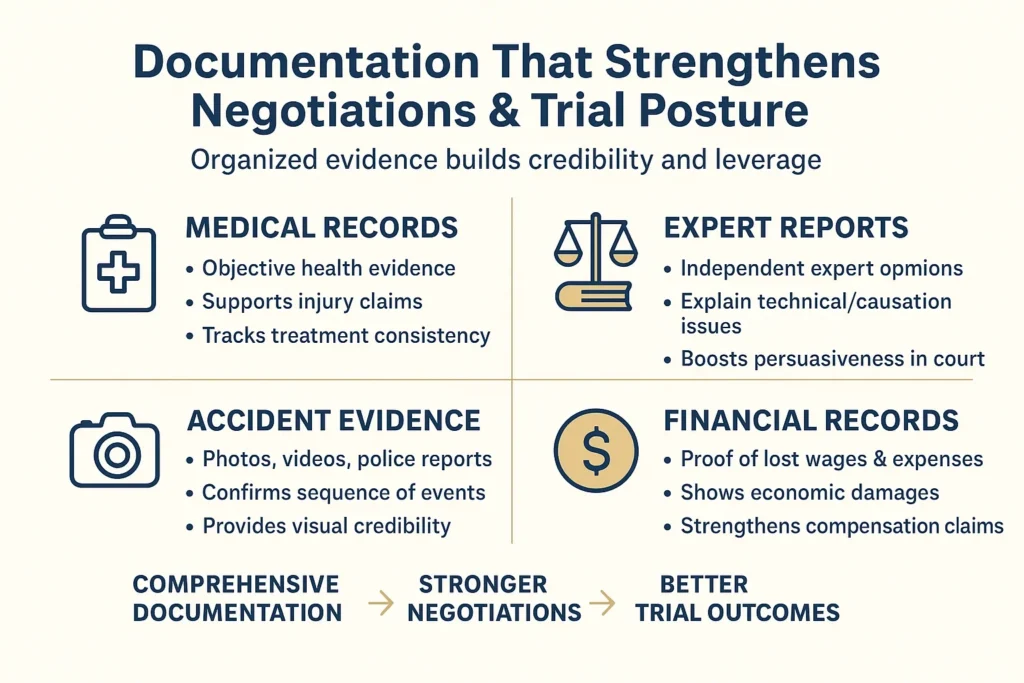
Successful comparative fault arguments rely on organized proof. Lawyers build a record that includes certified crash reports, 911 recordings, scene photographs with scale references, vehicle inspections, black box downloads, medical records, pay records for wage loss, and a log of out-of-pocket expenses. They add annotated maps, annotated video stills, and expert summaries. This package tells a coherent story that shows how each driver’s choices shaped the outcome and why a particular percentage split makes sense.
Strategic witness preparation and persuasive presentation
Counselors prepare clients and lay witnesses to explain events clearly. They practice short, concrete answers that match physical evidence. Experts use simple models and demonstratives that translate complex physics into everyday language. During mediation, attorneys present a streamlined deck that walks through the evidence in chronological order. In a trial, they sequence testimony so each witness hands the narrative to the next person without gaps. Jurors and adjusters follow the logic and accept fair allocation when the story remains consistent.
Practical steps clients can take during fault disputes.
Injured drivers can support the process from day one. Share all prior injury history with counsel so experts can distinguish new harm from old conditions. These habits provide experienced Atlanta car accident lawyers the raw material they need to establish a responsible and credible percentage split under Georgia law. When clients and counsel work together with this level of detail, evidence drives negotiations, and compensation accurately reflects the measure of fault.


